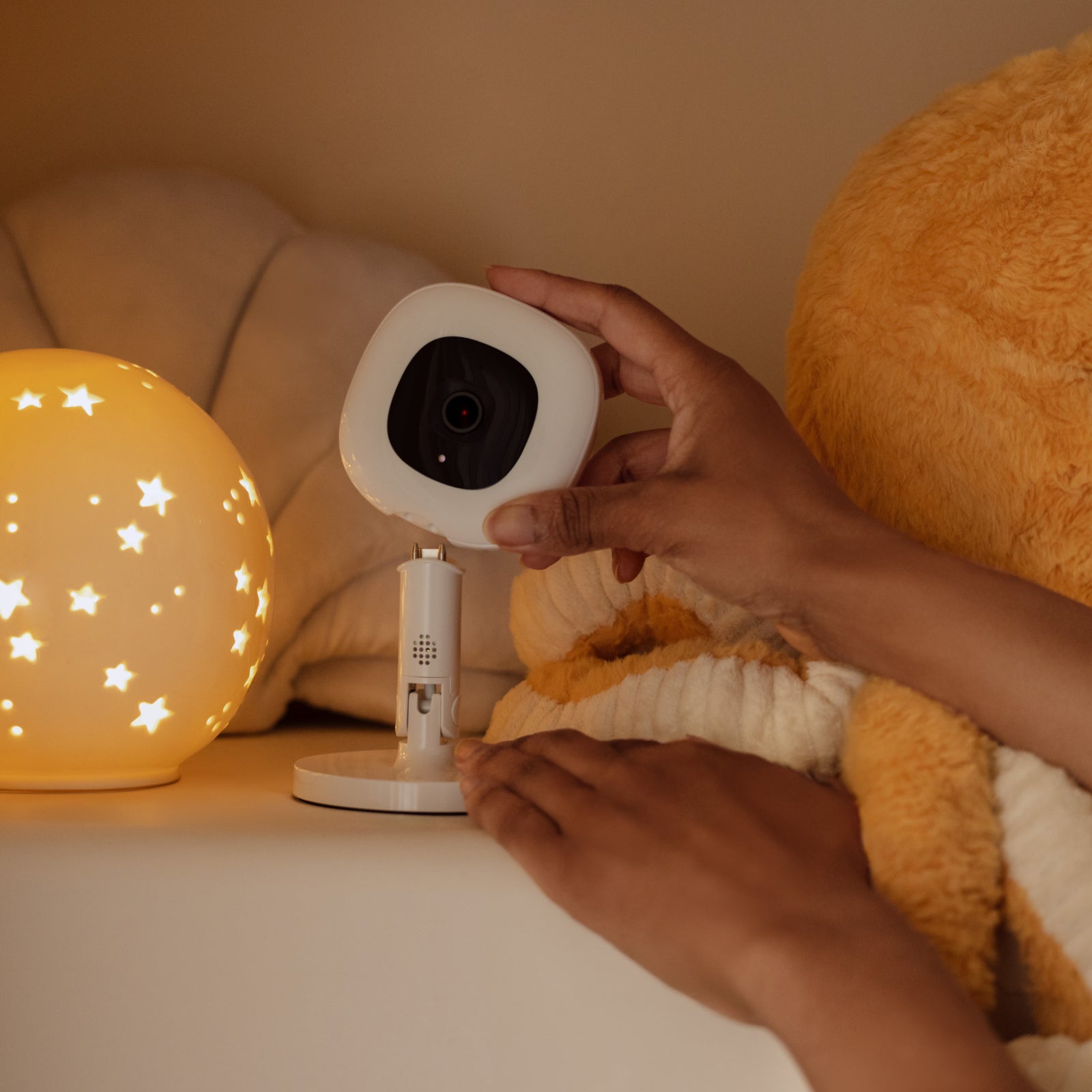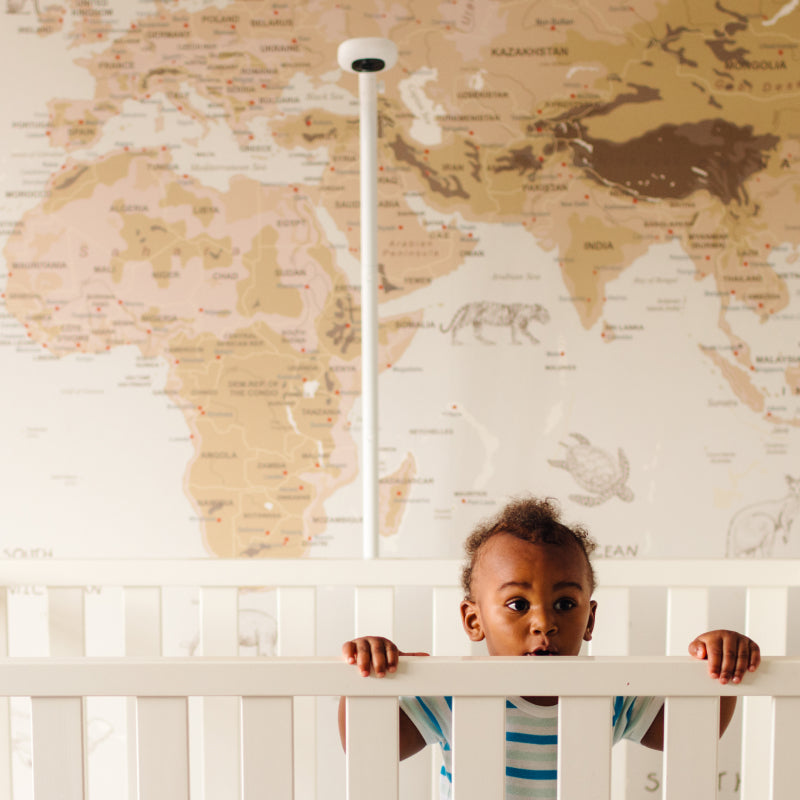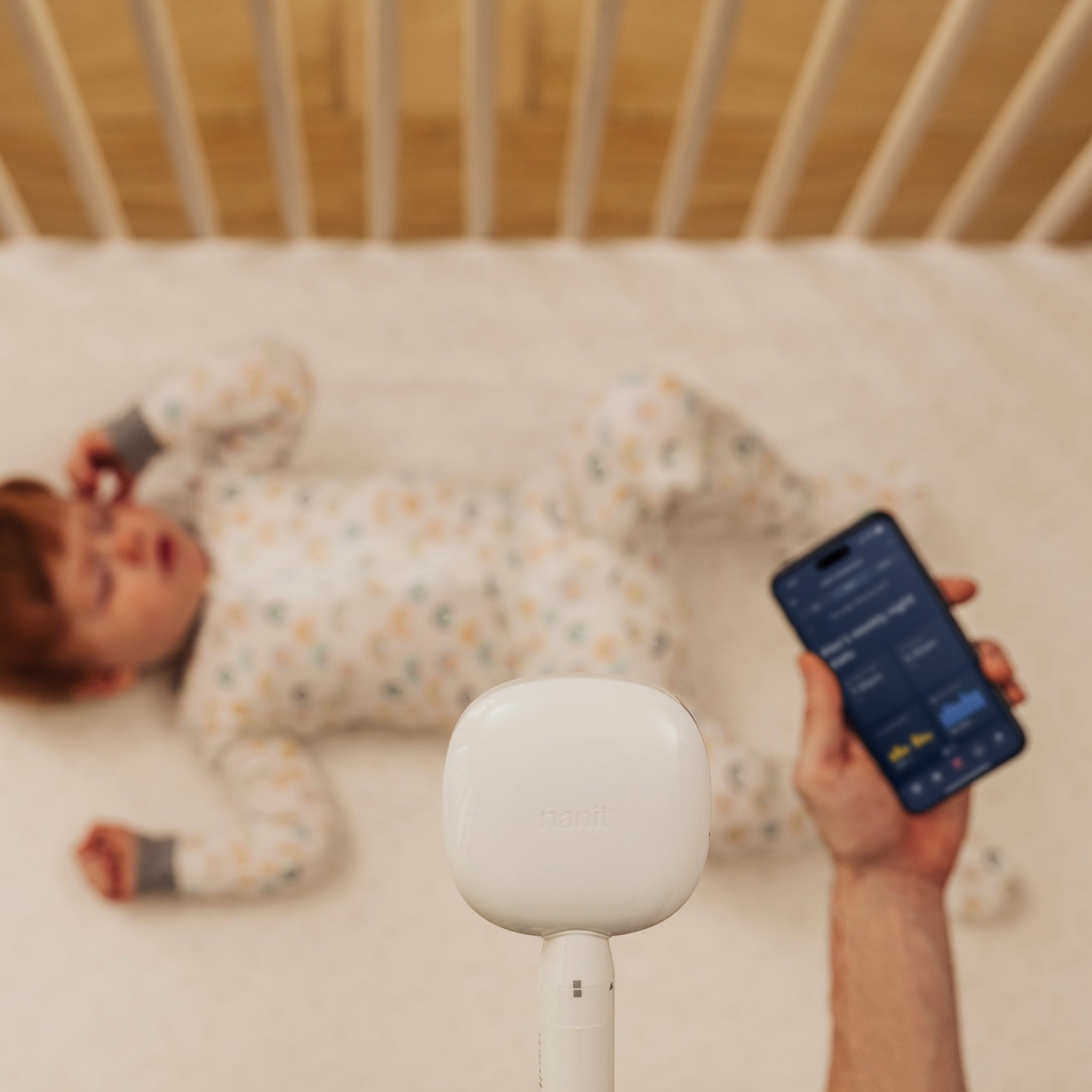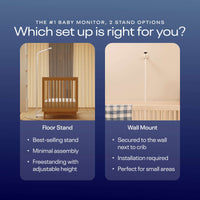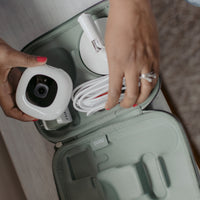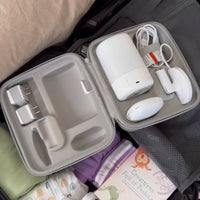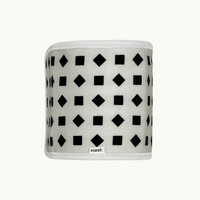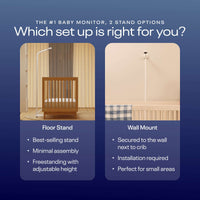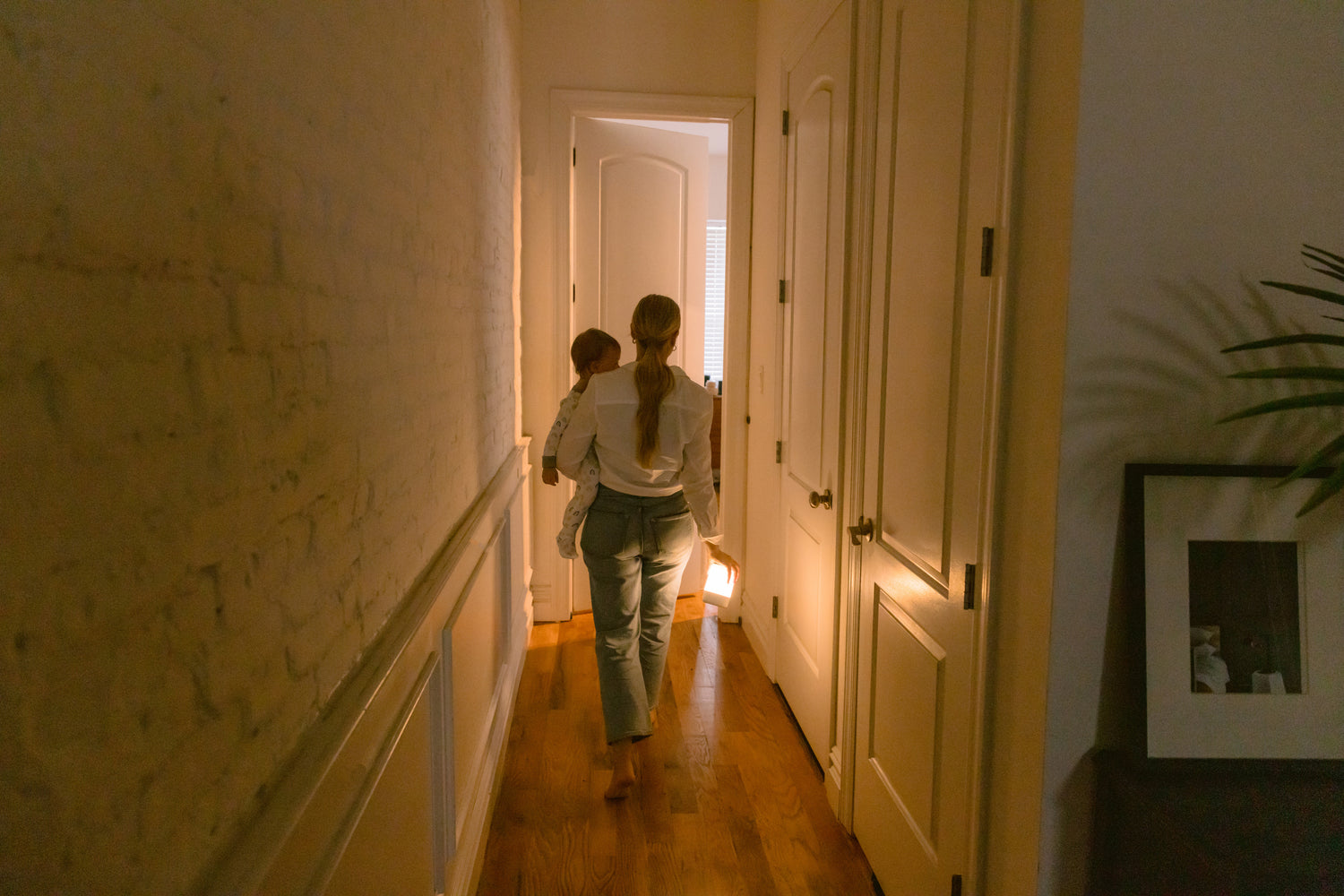Here at Nanit, we’re dedicated to revolutionizing the way babies sleep by putting amazing technology in the hands of parents everywhere. We’re moms, dads and sleep fans ourselves, so we get that sleep is so much more than what you do at night. It’s the fuel that keeps your family going, that secret sauce that powers your best memories.
With baby’s arrival, though, it can often feel like a thing of the past, right up there with chariot racing, shoulder pads and “The Rachel.” But with a little planning, you and baby could be off to dreamland in no time. The trick? Setting up a sleep routine that actually works.
Forget what you’ve heard about intense, three hours-long bedtime rituals. Putting a baby sleep schedule in place doesn’t have to be a nightmare. Here are some easy steps to get babies four months and up into a routine that means better sleep for the whole family.
- Get a head start
- Stick to one bedtime
- Set up a smart sleep space
- Keep nighttime routines super simple
- Don’t discount the daytime routine
- Give it time
Let’s dive in and break these down in depth:
Get a head start
It’s never too late to start a sleep routine, but around four months is the sweet spot, says Dr. Natalie Barnett, an infant sleep behaviorist who runs Seven Oaks Sleep Science in New York City. That’s when baby’s ability to self-soothe starts to kick in and they can go 8 to 12 hours without needing to be fed.
Of course, even at four months, good sleep might not come naturally, says Barnett. Like any healthy habit – flossing, exercising, finding the inner strength to say no to a third slice of cake – sleep often has to be learned. But once baby gets into a routine and sleeps through the night, it can make a world of difference for baby’s mood and cognitive and physical development. As Barnett says, “sleep is as important as food for baby’s development.” It’s vital for parents too.
“We know that sleep deprivation can exacerbate the symptoms of postpartum depression,” Barnett says. “In terms of a mother’s mental health and well-being for everyone, it’s very, very beneficial for parents, as well as babies, to be getting sleep.”
Stick to one bedtime
Once baby reaches four months and their circadian rhythms have developed, their bedtime should fall between 6 p.m. to 8 p.m., Barnett says. Choose a time that works for your family, taking into consideration when you leave for and get home from work. For example, if you pick 7:30 p.m., baby might not wake up until 7:30 the next morning and you could miss seeing them before work.
Once you do settle on a time, it shouldn’t change. Even if Dad comes home late one night and wants to see baby past their bedtime.
“Your baby’s need for sleep is greater than your need to see the baby,” Barnett says. “I would not invite you to my house for dinner at three o’ clock in the morning because I respect that you have a need to sleep.”
Set up a smart sleep space
If baby’s nursery is set up properly, every other step in the routine will run smoothly. And it doesn’t take much to craft an ideal space for sleep. Barnett recommends:
- A dark, dark room at a cool temperature
- A full-size crib mattress so baby has room to move
- A white noise machine to drown out sounds
- A bare crib – no dangling mobiles, no stuffed animals, nothing to stimulate baby at night
Each element cues baby that it’s snooze time and helps them get back to sleep on their own. Consistency is key. That way if baby does wake up in the middle of the night, they’ll know just what to do. “They’ll see that it is dark, hear the white noise and get themselves to sleep,” Barnett says.
Keep nighttime routines super simple
Barnett sometimes finds that her clients have set up elaborate bedtime routines that can last a small eternity. A bath, a massage, a couple of books, a song-and-dance number straight out of a Broadway musical and finally sleep. She prefers a much shorter approach.
“Babies don’t need a whole suite of things,” Barnett says. “They just need a sleeping environment set up so that it’s conducive to sleep and short small cues to say that it’s time to sleep.”
In fact, the evening routine doesn’t need to take more than 10 or 15 minutes. Start with baby’s last feeding in a brightly lit room where they won’t fall asleep. Next, engage baby in a simple activity that’s always done in the same place, like reading a book in the living room. Then take baby to the nursery, put them in the crib, turn off the lights, turn on the white-noise machine and leave the room as you say a mantra like "Goodnight, I love you, see you in the morning!" That’s it. To help create that calming environment for your baby, consider using a light and sound machine as your baby drifts off to sleep.
“There should be at least a couple of minutes between that last feed of the day and when baby goes to sleep,” Barnett says. “After four months, I don’t want baby falling asleep at the breast or the bottle because then they’re going to need that when they wake up during the night.”
Don’t discount the daytime routine
Daytime naps and feedings play a big part in what happens at night. If baby gets too little or too much sleep during the day, it could throw bedtime out of whack.
“Their feeds should be well-spaced throughout the day,” Barnett says. “If your baby is taking a four-hour nap in the middle of the day, they’re missing a feed and are going to need that feed at nighttime.”
The same sleep cues that apply to the night apply to the day too. Barnett suggests post-nap feedings so that baby doesn’t associate sleep with being fed.
“A nap routine can be very, very similar to the nighttime routine,” she says. “Literally just one book on the couch to signal that it is time to go to sleep and then pop the baby down into bed.”
Give it time
Bad habits are hard to break. Sometimes a sleep routine can take just two days to stick. Sometimes it can take weeks. Stay with it, though, and there will be no stopping baby.
“Babies truly thrive when their life is consistent and they know what’s coming next,” Barnett says. “Say they’ve established good sleep habits from when they’re very young, it’s going to benefit them for the rest of their lives.”
Stay tuned for more sleep tips and news about Nanit coming soon to the blog!



